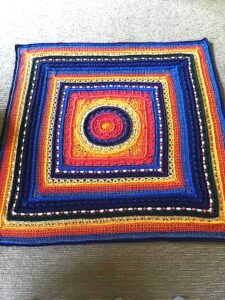This is the first part of a five-part blog series with this outline
Part One: Personal Background Information (Release Date: 3-16-22)
Part Two: Information Storage – Bridge Pieces (Release Date: 3-30-22)
Part Three: Information Processing – The Gaps (Release Date: 4-13-22)
Part Four: Information Retrieval – Canoe Transportation (Release Date: 4-27-22)
Part Five: Conclusion (Release Date: 5-11-22)
As a teen I lived some years in a state institution. I hadn’t yet been diagnosed with autism. I had never even heard the term. And yet, I wrote extensively, explaining how my insides looked to me. It was explained to me that I had had a nervous breakdown. Therefore, it made sense to write down the information I could about my internal workings that I could see with my mind’s eye. I suspected this information, though I didn’t understand it, would be helpful to the doctor in figuring out why nerves had broken down and thus he could get to work fixing them. It seemed a logical way to my literal mind to go about remedying a nervous breakdown!
Now, several decades later, I am near retirement. I have had a full and interesting life. Along the way I have been diagnosed with autism. Professionally, I am a clinical social worker. For many years my work has been concentrated on all things autism. Today I work as a mental health clinician a few days a week and on other days work as an autism consultant to school districts and agencies. I have authored several books, written many articles and blogs, and do public speaking in my country and other countries on a variety of autism related topics.
It is interesting to me how the writings I did when a teenager, even though I did not understand them at the time, accurately explain the inner workings of my autistic neurology. Today, I have knowledge and experience in the field of autism and can actually understand what I wrote back then. The following three parts of this blog series are one example each of storing, processing and retrieving information and come from my book Paper Words: Discovering and Living With My Autism (Endow, 2009). As a teen I could see this internal information and thought it vitally important for my doctor to know, imagining it would allow him to do his work of mending my nervous breakdown. Ultimately, the doctor was polite and caring about my written words, held them in his hand while he spoke with me for a few minutes and then returned them to me, never having read them. Part 2, 3 and 4 of this blog series are those words.
Selection from Autistically Thriving: Reading Comprehension, ConversationalEngagement,
and Living a Self-Determined Life Based on Autistic Neurology, pg. 105.
The first photo is an acrylic painting I did that became a cover photo for my book Painted Words: Aspects of Autism Translated (Endow, 2013). The second photo is an afghan
I crocheted to match the painting some years later.
“`
““`
Note: The author is a mental health therapist and is also autistic. She intentionally uses identity-first language (rather than person-first language), and invites the reader, if interested, to do further research on the preference of most autistic adults to refer to themselves using identity-first language.
BOOKS BY JUDY ENDOW
Endow, J. (2021). Executive Function Assessment. McFarland, WI: Judy Endow.
Endow, J. (2019). Autistically Thriving: Reading Comprehension, Conversational Engagement, and Living a Self-Determined Life Based on Autistic Neurology. Lancaster, PA: Judy Endow.
Endow, J. (2012). Learning the Hidden Curriculum: The Odyssey of One Autistic Adult. Shawnee Mission, KS: AAPC Publishing.
Endow, J. (2006). Making Lemonade: Hints for Autism’s Helpers. Cambridge, WI: CBR Press.
Endow, J. (2013). Painted Words: Aspects of Autism Translated. Cambridge, WI: CBR Press.
Endow, J. (2009b). Paper Words: Discovering and Living With My Autism. Shawnee Mission, KS: AAPC Publishing.
Endow, J. (2009a). Outsmarting Explosive Behavior: A Visual System of Support and Intervention for Individuals With Autism Spectrum Disorders. Shawnee Mission, KS: AAPC Publishing.
Endow, J. (2010). Practical Solutions for Stabilizing Students With Classic Autism to Be Ready to Learn: Getting to Go. Shawnee Mission, KS: AAPC Publishing.
Myles, B. S., Endow, J., & Mayfield, M. (2013). The Hidden Curriculum of Getting and Keeping a Job: Navigating the Social Landscape of Employment. Shawnee Mission, KS: AAPC Publishing.

